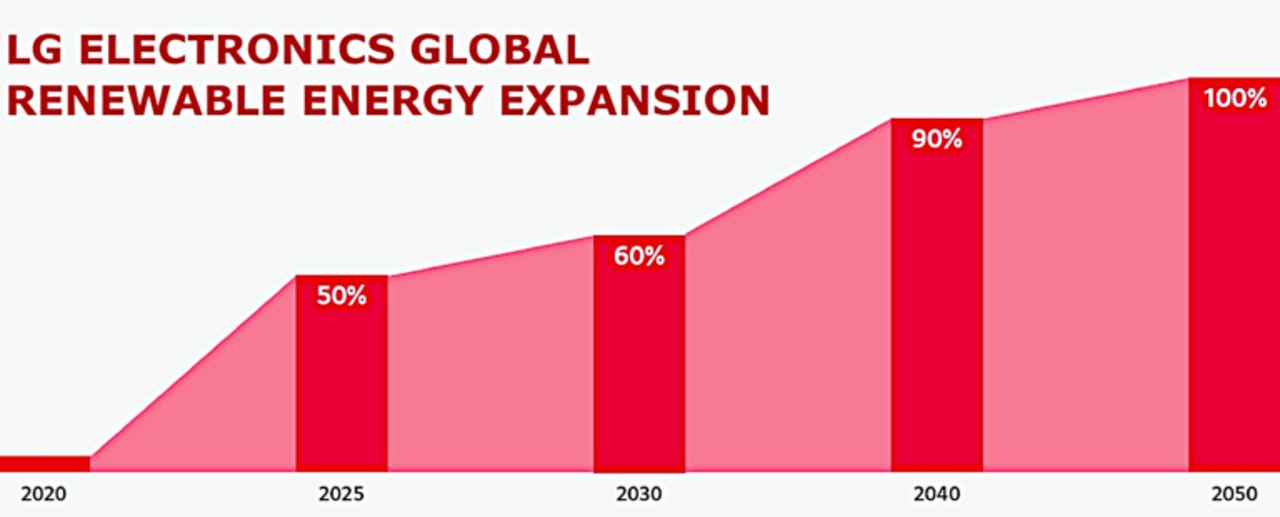LG pledges to operate with 100% renewable energy by 2050


LG Electronics on Thursday pledged it will transition to operating with 100% renewable energy by 2050.
The transition will first be implemented in North America, the company said, with LG's offices and manufacturing sites in that region to be powered by renewable energy by the end of 2021.
LG added that manufacturing facilities outside of South Korea are also on target to convert 50% of their electricity needs to renewable energy by 2025.
In explaining how LG would achieve 100% renewable energy by 2050, the company said it has plans to install solar panels on its buildings, utilise power purchase agreements that allow companies to purchase electricity directly from suppliers, utilise renewable energy credit certificates, and participate in South Korea's Green Premium program.
"Our commitment to creating a better life for all can best be actualised by LG transition to renewable energy and achieving carbon neutrality," LG Electronics Safety and Environment Division senior vice president Park Pyung-gu said.
"In today's world, innovation doesn't just happen in the lab, they must also happen in our factories and plants. Today's manufacturers have a once-in-a-lifetime opportunity to give the next generation a world worth inheriting and at LG, we take this responsibility very seriously."
Two years ago, LG pledged to be carbon neutral by 2030, which entails reducing carbon emissions in the production stage to half of what it emitted in 2017 by 2030. As part of that plan, LG said in its latest sustainability report it is on track to both achieve 95% in waste recycling rate at its production sites and transition to using only electric or hydrogen cars for business by 2030.
It also said in the sustainability report that it continued to reduce its total scope 1 and 2 greenhouse gas emissions in 2020, releasing almost 1.3 million tonnes of carbon dioxide equivalence, which was 12% fewer emissions compared to 2019. Scope 1 emissions are direct emissions from owned or controlled sources while scope 2 emissions are indirect emissions from the generation of purchased energy.
The promise to reach "100% renewable energy" has slowly become more common among big tech companies, with Amazon, Microsoft, and Oracle, among others making pledges to a similar objective.
LG's South Korean compatriot, Samsung, is yet to make a similar commitment, however. In fact, Samsung Electronics released more greenhouse gas emissions in 2020 compared to the year prior, according to the company's annual sustainability report.
The report [PDF] said Samsung's greenhouse gas emissions rose by 5% year-on-year, releasing 3.2 tonnes of CO₂e (CO₂ equivalent) per 100 million won in revenue, due to the company expanding the operations of its semiconductor production line and product output.
With the emissions increase, Samsung fell short of its emissions target for 2020 of 1.55 tonnes of CO₂e per 100 million won, which is a 70% reduction from 5.17 tonnes of CO₂e per 100 million won in 2008.
Related coverage
- Amazon unveils its largest single renewable energy project ever
- Oracle pledges to power global operations with 100% renewable energy
- Microsoft is opening this 'advanced and sustainable' data centre region next year
- Singapore opens floating 60-megawatt solar farm
- Google commits to run using carbon-free energy by 2030